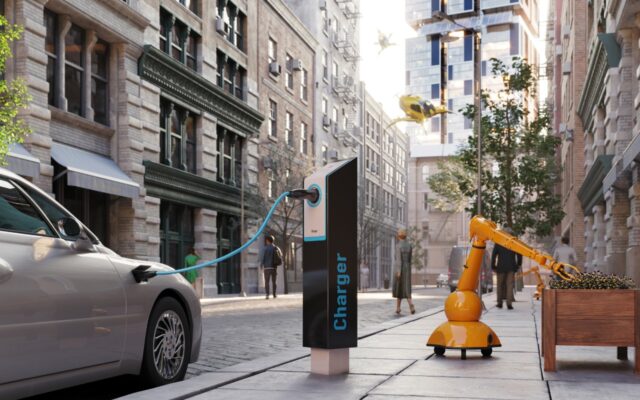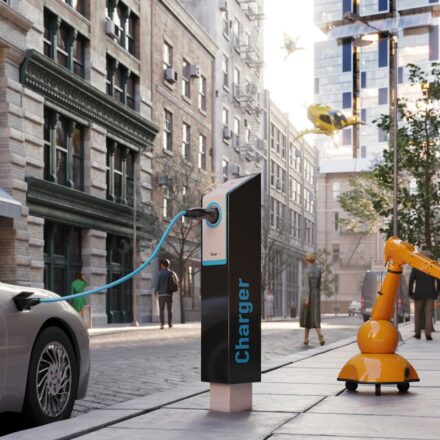This blog is co-authored by Brad DeForge.
Let’s take stock of where we are. We explored sustainability at the edge. Now we arrive at the intersection of sustainability, energy consumption and modern (4G/5G) telecommunications networks. Network energy consumption is directly tied to sustainability and is among the most significant contributing factors to total cost of ownership (TCO). According to GSMA research, the Radio Access Network (RAN) consumes approximately 73% of the total network energy. The rollout of 5G is poised to increase data consumption by an order of magnitude over today, and this increase will require more investment in infrastructure and, by extension, energy to carry that network traffic.
Mobile Network Operators (MNOs) want to do what they do best: run their networks and maintain or improve network performance for their customers—but at a manageable cost. When I speak with Dell Technologies customers, they all tell me that energy cost is of the utmost importance—it’s a top priority for CTOs and CFOs, it’s key to P&L and it’s urgent.
Dell’s Commitment to Effective Energy Efficiency
In our capacity as industry leaders, it is our responsibility to provide a cost-effective path to long-term improvement for our customers, while reducing network investment costs. We can expand the choices available to our customers in a multi-vendor market by leveraging open, well-defined network interfaces and integrating innovative hardware and software solutions.
Open Interfaces
Disaggregation of the RAN promises to be the great enabler of multi-vendor interoperability. The disaggregation and virtualization of the RAN and its functions, using components from a variety of vendors, does not in and of itself guarantee interoperability. Interfaces play a critical role in supporting disaggregation through standards, specifications and protocols. They are key to the successful implementation of interoperable, vendor-agnostic and non-proprietary networks. Radio network operators can realize innovations big and small, all coming to bear on energy efficiency. Heterogeneous networks integrate the best solutions from a variety of vendors to accelerate adoption of energy-saving features as an antidote to the urgency of energy costs.
Provisioning for Efficiency
In an ideal world when we have zero traffic, we’d consume zero watts. But network hardware capacity is provisioned for peak traffic, 24/7, even though daily average traffic load is typically less than 30%. MNOs pay the energy cost to maintain peak capacity even when there is zero network traffic. To reduce operating costs through energy efficiency, every underlying network element must be designed with energy-saving capabilities that allow each to optimize capacity and energy consumption in proportion to traffic loads and patterns.
In the RAN, the undeniable focus is the radio’s prominence in the network energy consumption equation. Therefore, radio architectures are crucial to managing energy efficiency. Evolution toward an intelligent radio design where the radio is hardware-capable and software-enabled to perform energy savings is key.
Achieving real energy savings at the radio starts with reacting to opportunities to deactivate during periods of zero traffic—symbol blanking is a micro-sleep example. With a network-wide view, radio-based macro-sleep examples include orchestration of carrier and antenna branch shutdown and cell deep-sleep. Looking beyond the radio, traffic shaping, energy efficient-scheduling and leveraging server-compute p-state and c-state optimizations produce efficiencies for the wider RAN.
Network elements can no longer be considered individual nodes; networks of the future will involve AI-orchestrated cross-layer management of hardware and software for best-possible energy efficiency outcomes. AI/ML mechanisms are required to dynamically learn, adapt and act upon the best balance of power savings and subscriber experience at each cell site and radio. Standardized and specified open interfaces are paramount to bringing us closer to the near-term goals for our customers.
The ideal long-term goal for radio network operators is one where network energy consumption scales proportionately with network traffic. As modern networks evolve, QoS and traditional KPIs continue to be important, but we must also embrace new energy efficiency KPIs to ensure these goals are met.
Making a Difference
Our focus on energy efficiency—from the CTO’s office to engineering—has a view of all aspects of network operations and efforts to address network energy efficiency. This is the right thing to do.
Sustainability and energy efficiency are as imperative for Dell as for our customers. Our telecom business is invested in 5G network operations, services, servers and storage and in embracing standards and specifications that promote disaggregation. We share the urgency of energy efficiency goals with our customers and are committed to reaching net zero, together. We invite readers to review our white papers on Dell’s Enabling Telecom Transformation Infohub site. We would love for you to join us on February 19 at 11 a.m. ET alongside Intel and Vodafone as we discuss telecom’s sustainable future and at the MWC Sustainability Summit on February 28.


